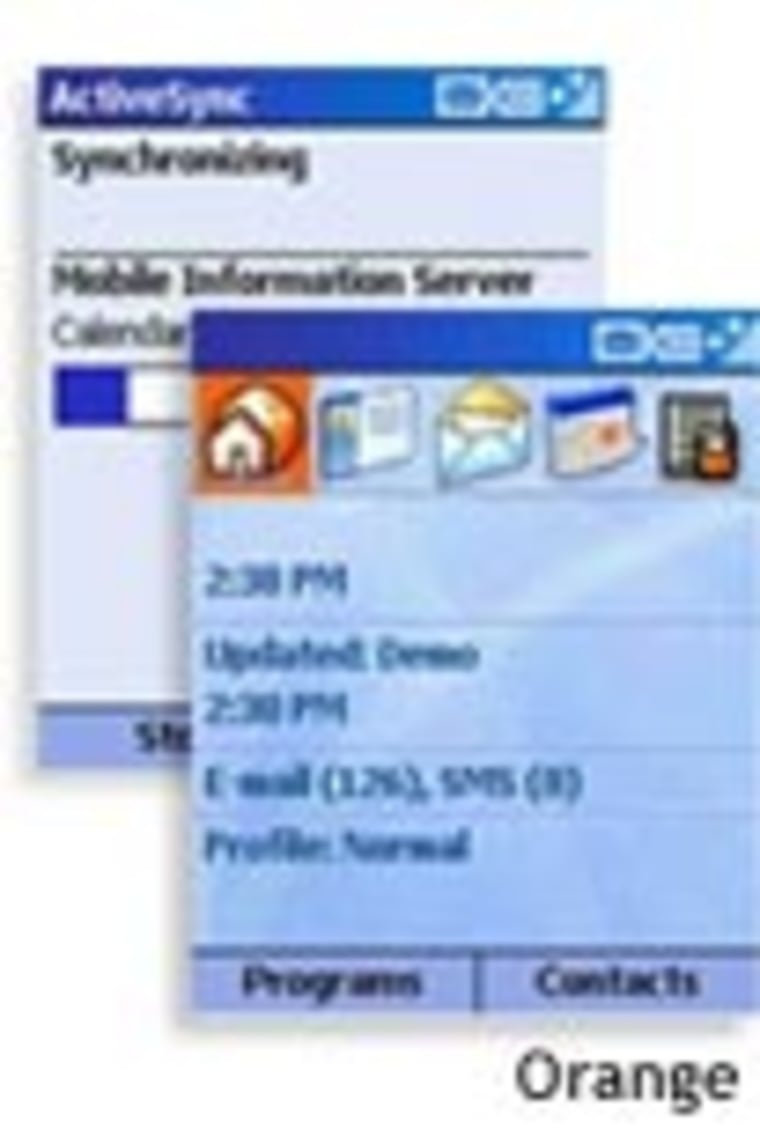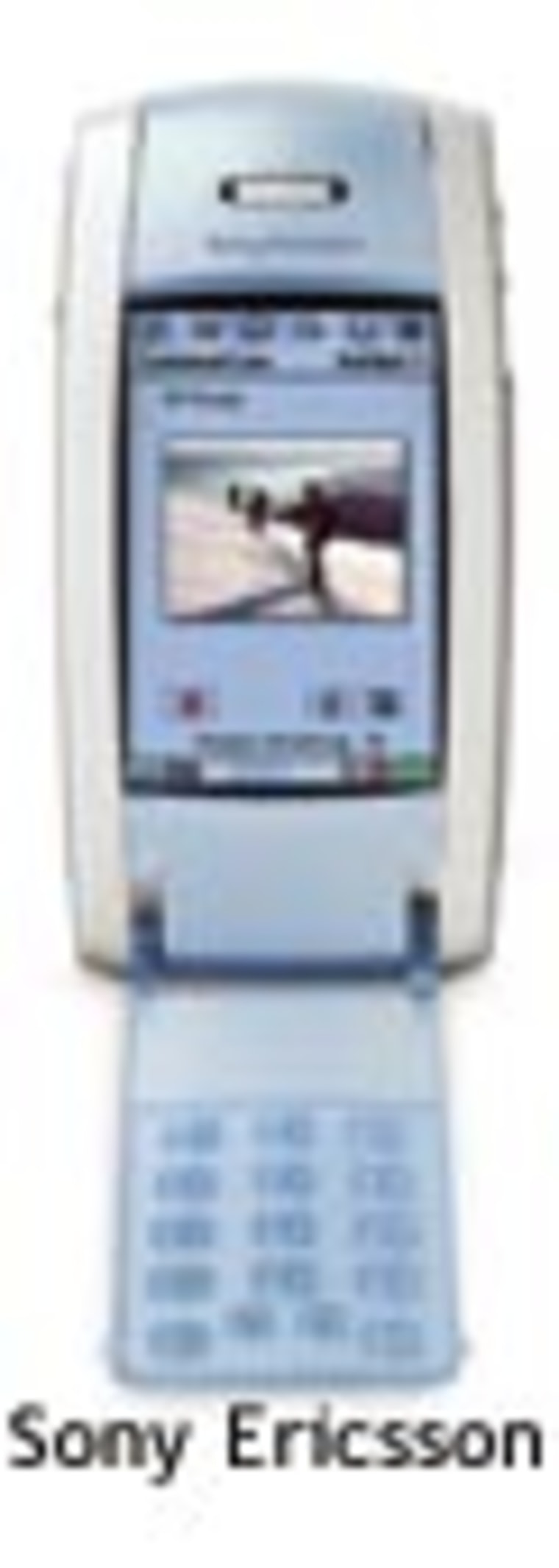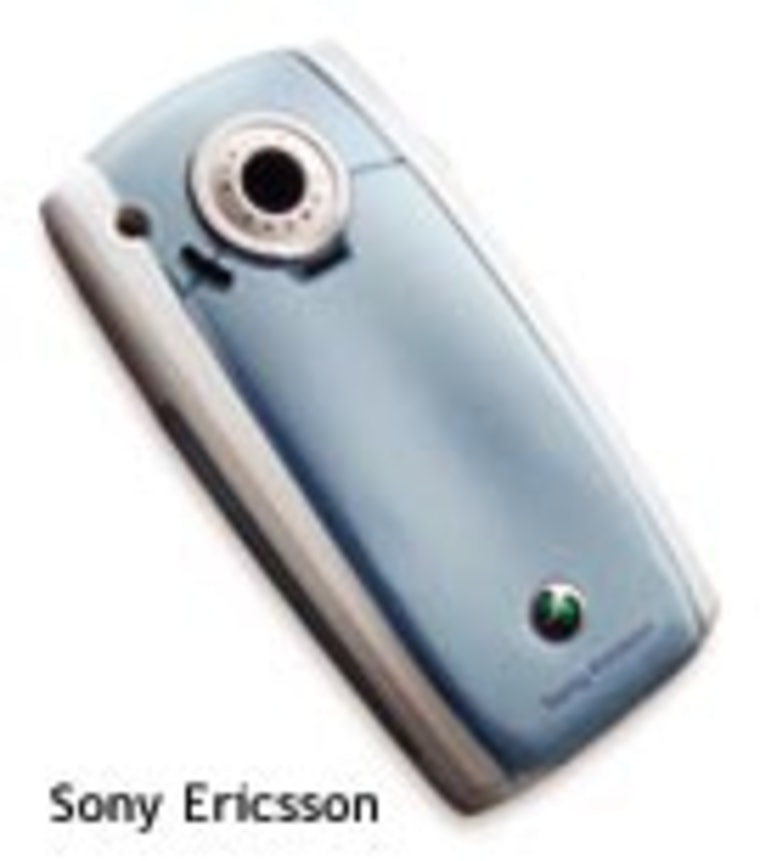In the past few weeks I’ve received half-a-dozen new cellular phones for testing. All of them are nice — but none stood out as something out of the ordinary. So, on a recent trip to London, I thought it was wise to try two phones that aren’t yet available in the United States. I found that, with minor reservations, both are worth waiting for.
InsertArt(1731831)FOR THE PAST TWO YEARS, I’ve been writing about a phone codenamed “Stinger” in various stages of development. Based on Microsoft’s Windows CE/Pocket PC operating system, Stinger was designed from the start to be a combination of PDA and cellular phone. Aside from the mobile versions of Microsoft’s Office suite, Stinger’s main feature was that is was made to be a one-handed device.
(MSNBC is a Microsoft- NBC joint venture.)
About a month ago, the first Windows-powered Smartphone ‘Stinger’ phone hit the market in England. Sold by cellular provider Orange, the SPV (Sound Pictures Video) phone is a marvel in miniaturization. In a package only 4.6 by 1.1 by 0.9 inches, weighing a whopping 4.2 ounces, SPV is a full-featured PDA and a tri-band, world GSM/GPRS cellular phone. The handset is manufactured for Orange by HTC, makers of Compaq’s iPaq PDA.
The processor is a 120 MHz Texas Instruments ARM chip. Built-in memory consists of 32 MB of flash ROM and 16 MB of SDRAM (more than 6 MB available to the user). There’s also a SD/MMC card slot for extra memory, a good idea if you want to use the SPV as a MP3 player. (More about that in a minute.) An infrared port and stereo earphone jack round out the package. A clip-on camera comes in the package.
Inside, the 176 by 220 pixel color screen (64K colors) is really sharp and terrific. The rechargeable lithium-ion battery provides up to 2.5-to-3 hours of talk time and 100 hours of standby. Software includes Microsoft’s familiar Pocket PC offerings: Pocket Office suite, Pocket Internet Explorer, MSN messaging, Windows Media Player and lots more.
WHAT’S IT LIKE? As a cell phone, the SPV works exactly as promised. Calls sounded good, and because everyone in London uses GSM phones signal quality was amazing everywhere. But SPV’s best features are buried in all the applications inside. Browsing the Internet was pretty easy once I figured out how to find the dot to type in a Web address. It was actually easy to read words on the screen and screen writing times were pretty good considering GPRS isn’t much faster than a 56K modem connection.

This is the first phone that I’ve played with which allows you to download applications directly from the Internet. I was able to download pictures for screen wallpaper by just pressing a button. The SPV’s software did the rest, downloading and installing everything in the right place. Same for music files. I was able to download a file - then play it back on SPV’s Media Player. Sound quality through the built-in speaker was forgettable. It sounded a whole lot better through the headphone jack.
Downsides? The SPV has so many features and is so unlike any other cellular/PDA I’ve ever played with it took me awhile to get used to the menu system and navigate through all the features. After a day I was fine.
I also found the keypad a mite small for my hands; it was difficult to “dial” with my thumb, a necessary operation when you’re attempting to use a one-handed device. I found it easier to use the index finger of my other hand. I hope future Smartphone designs will be a little more fat-finger friendly.
Overall, Orange should really be commended for their GPRS service offerings. Specifically, the Orange SPV home page for this phone is terrific: You can securely and wirelessly synchronize your office e-mail, calendar and contacts, find lots of stuff to download and read the latest news and sports headlines. I spent a lot of my two days with SPV on their Web site, but of course you can also synch SPV to your desktop computer. (I didn’t get to test SPV retrieving my MSNBC e-mail as my office mail servers aren’t yet SPV friendly.)
Orange is currently marketing SPV in their England and Denmark markets. In England, the phone is selling online for the bargain price of £149 or US$244 and is actually out of stock as I’m writing this.
But before you rush out to buy one and use it here in the States, you should know that because Orange is heavily discounting the phone they’ve locked the software for use only with Orange SIM chips.
Windows-powered Smartphones for the U.S. market should begin appearing in the next few months.
THE COMPETITION A very clever PR lady read my previous column when I stated I would be testing a Stinger phone on an upcoming trip. She asked if I’d like to also test a phone based on Microsoft’s main competitor in this market. I jumped at the chance.

Peter Bancroft, Communications Vice President of Symbian (remember Psion PDAs?) sent me a pre-production version of the soon-to-be-released Sony Ericsson P800, the newest of a number of phones currently in development using Symbian’s telephone OS.
The P800 is one heck of a phone.
Like the Orange SPV phone, the P800 is also a tri-band GSM/GPRS world phone. The keypad on the front flips down to reveal a huge (for a phone) color touch screen. Size wise, the P800 is 4.7 by 2.4 by 1.1 inches and weighs 5.6 ounces (with the flip attached). The screen is 208 by 320 pixels or 208 by 144 pixels with the flip closed.
The P800 also has a built-in speakerphone, Bluetooth wireless technology and an infrared port. As for software, Symbian is neck and neck with the Smartphones, providing a both WAP browser and Opera Web browser, a video player, MP3 capabilities, a bunch of games and a full-featured office suite. Expansion is via a Memory Stick.
The P800’s flip-down keypad also has small buttons. I found it easy to press more than one at a time.
The thing that sets the P800 apart from the SPV is the built-in handwriting recognition software. First of all: It works! The P800 is meant to be a two-handed devicem, so writing on the screen with a stylus is a necessary evil. After locating the stylus (it’s very, very well hidden in the side of the handset) I was amazed to see just how well the phone was able to read my handwriting. Better than most other PDAs I’ve ever tested. It made character input a dream. As a matter of fact, the P800 is the easiest two-handed phone I’ve ever used.

The other main feature of the P800 is the built-in camera. Unlike the SPV’s snap-on camera, the P800’s is built into the back on the phone handset. Taking a picture was easy, just a click to open the software and a press of the button to snap the shot. The pictures I took looked pretty good on the Sony Ericsson’s screen. Images stored on the P800 can be used with other built-in applications. So, for instance, a friend’s picture could pop up on the screen they next time they call you (assuming that’s what you’d like your cell phone to do).
I must mention the P800’s sound quality as well. It was way-above par, quite possibly the best audio I’ve ever heard on a phone. I made the mistake of trying to listen to an MP3 Guns and Roses track during high tea one afternoon. I can report that the P800 can play music embarrassingly loud. On the downside, I couldn’t get the WAP browser to work at all. Opera’s Web browser worked just fine.
Prices for the P800 will be announced soon. The phone is expected to be released in all of Europe before the end of this month and before the end of March in the United States.